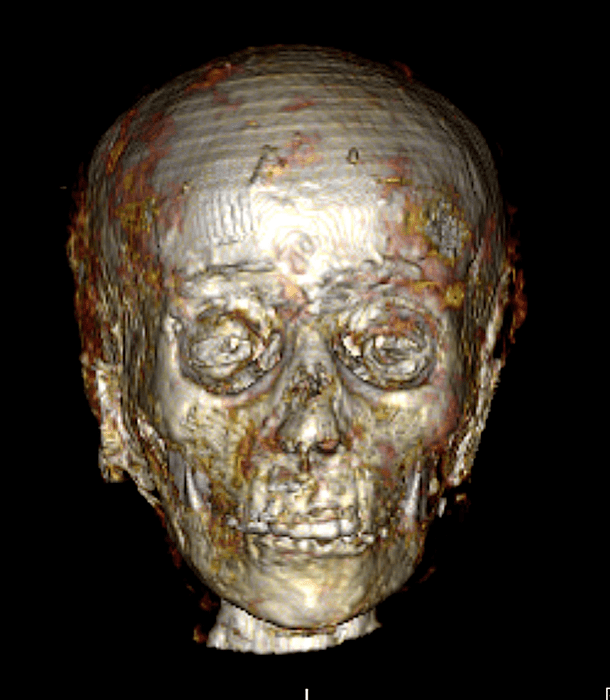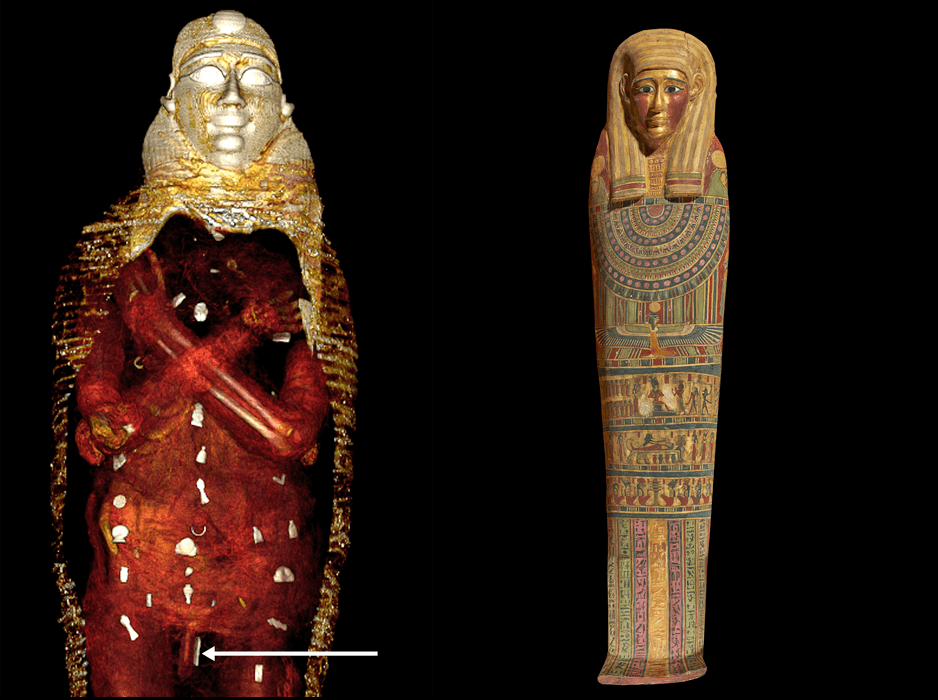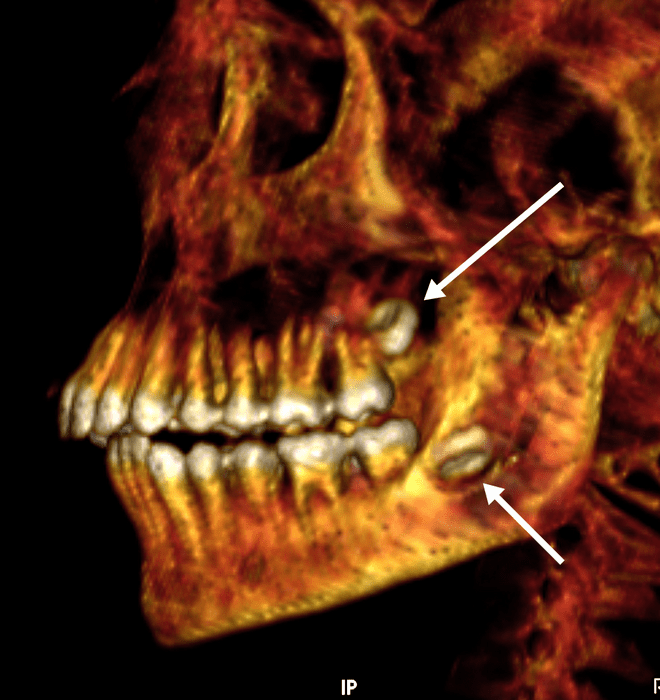Scans have been used to digitally unwrap Ancient Egypt’s “Golden Boy” – and it’s easy to see how this privileged teen got his nickname. The mummy had 49 amulets made of gold, stone, and semiprecious stones carefully placed inside and around his body, including a golden heart scarab beetle placed inside the chest and a golden tongue laid inside the mouth.
It was first recovered in 1916 at a cemetery used between approximately 332 and 30 BCE in Nag el-Hassay, southern Egypt. The body was found fitted with a gilded head mask and a chest plate, then laid inside two coffins with an outer coffin inscribed in Greek and an inner wooden sarcophagus.
Despite its lush burial, the mummy was never opened, and remind unexamined in the basement of the Egyptian Museum in Cairo until very recently.
In a new study, archeologists used computerized tomography (CT) scans to study the mummy of the so-called Golden Boy. They found that the remains belonged to a teenage boy who was clearly of high socioeconomic status some 2,300 years ago in ancient Egypt.

The mummy’s face on CT scans. Image credit: SN Saleem, SA Seddik, M el-Halwagy
At least 21 different types of amulets were discovered among the burial, each of which represented different elements of Egyptian beliefs. The golden tongue was placed inside the mouth to ensure the boy could speak to the gods in the afterlife, while depictions of double falcon and ostrich plumes were to represent the duality of spiritual and material life.
“Many were made of gold, while some were made of semiprecious stones, fired clay, or faience. Their purpose was to protect the body and give it vitality in the afterlife,” Dr Sahar Saleem, the study’s first author and a professor at the Faculty of Medicine of Cairo University, said in a statement.
“The heart scarab is mentioned in chapter 30 of the Book of the Dead: it was important in the afterlife during judging the deceased and weighing of the heart against the feather of the goddess Maat. The heart scarab silenced the heart on Judgement Day, so as not to bear witness against the deceased. It was placed inside the torso cavity during mummification to substitute for the heart if the body was ever deprived of this organ,” added Dr Saleem.

Inside out. Image credit: SN Saleem, SA Seddik, M el-Halwagy
It wasn’t just the wealth of gold that showed this teen was a fortunate son. It’s notable that his teeth were in remarkably good condition with no signs of cavities, tooth loss, or disease.
Their work suggested he stood at around 128 centimeters (4 feet 2 inches) tall. Based on the degree of bone fusion and the fact his wisdom teeth hadn’t yet emerged, the researchers believe he was no older than 15 years old.
Typical of ancient Egyptian mummification techniques, his brain had been removed through the nose and his skull was pumped with resin. All of his vital organs had been removed through an incision, except for his heart which remained in his chest.

The teen’s wisdom teeth had not yet emerged. Image credit: SN Saleem, SA Seddik, M el-Halwagy
On top of all his lavish and no doubt pricey adornments, he was also buried in a humble pair of sandals. After all, you shouldn’t be walking around with bare feet in the presence of the gods.
“The sandals were probably meant to enable the boy to walk out of the coffin. According to the ancient Egyptians’ ritual Book of The Dead, the deceased had to wear white sandals to be pious and clean before reciting its verses,” said Saleem.
The new study was published in the journal Frontiers in Medicine.
Source Link: Ancient Egypt's "Golden Boy" Entered The Afterlife Like A True Rich Kid